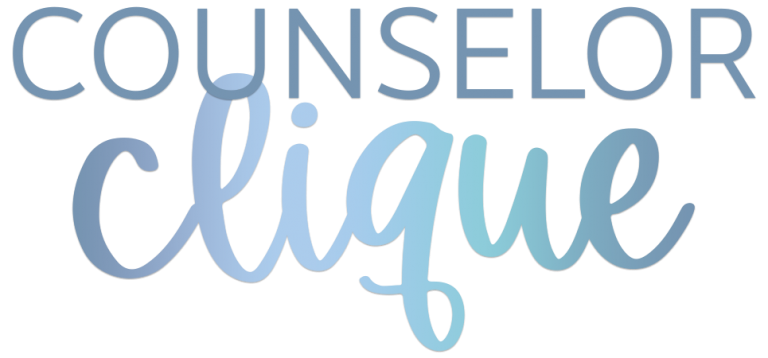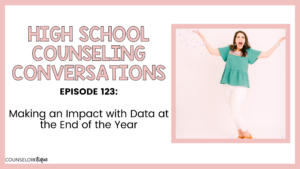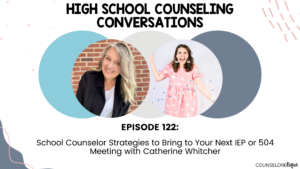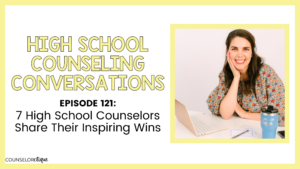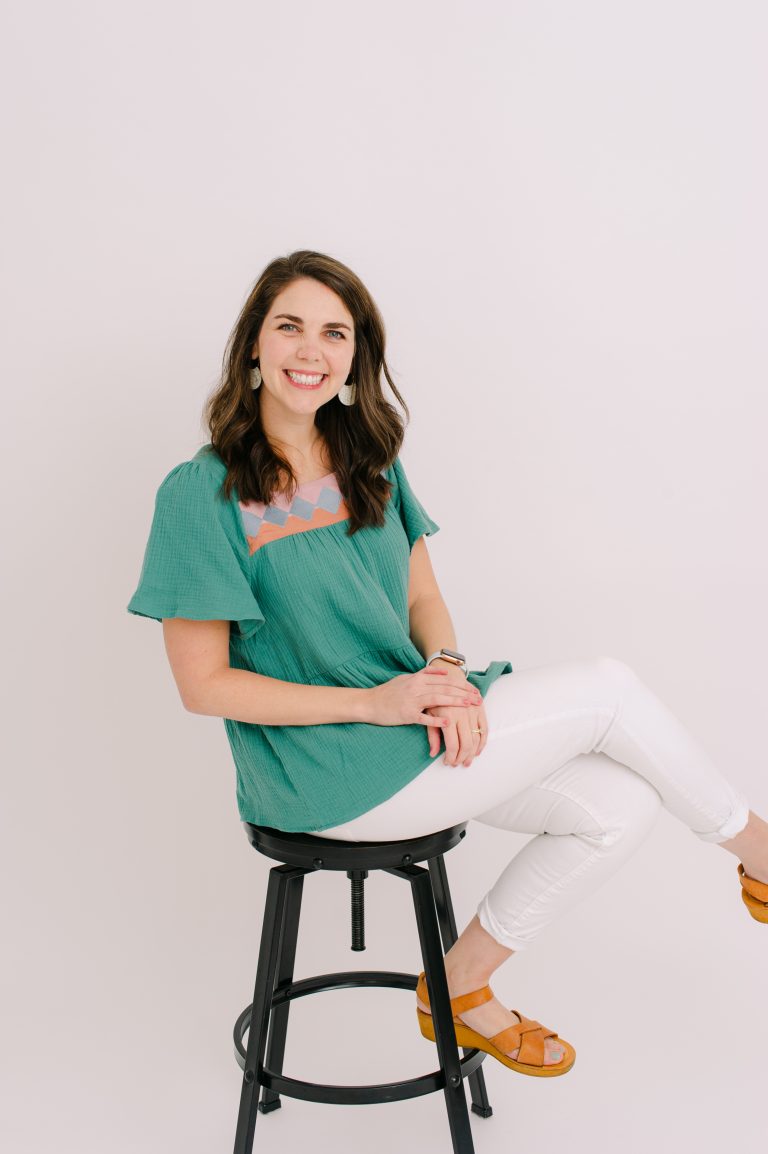This year, one of our program goals was: Fifty percent of ninth through eleventh grade students will visit a career fair display of their number one identified career cluster. Setting this as one of our three measurable program goals at the start of the school year really held us to finishing it out in the spring. First, we put it in writing in our Annual Agreements in September. Then, we posted it where we would see it during our weekly department meetings.
Warning: A career fair is NOT for the faint of heart. There are a lot of moving pieces and a lot of details, but it’s worth it! The title of this blog may be a little misleading… because there may have been a few times I thought I lost my mind… but read on for best practices.
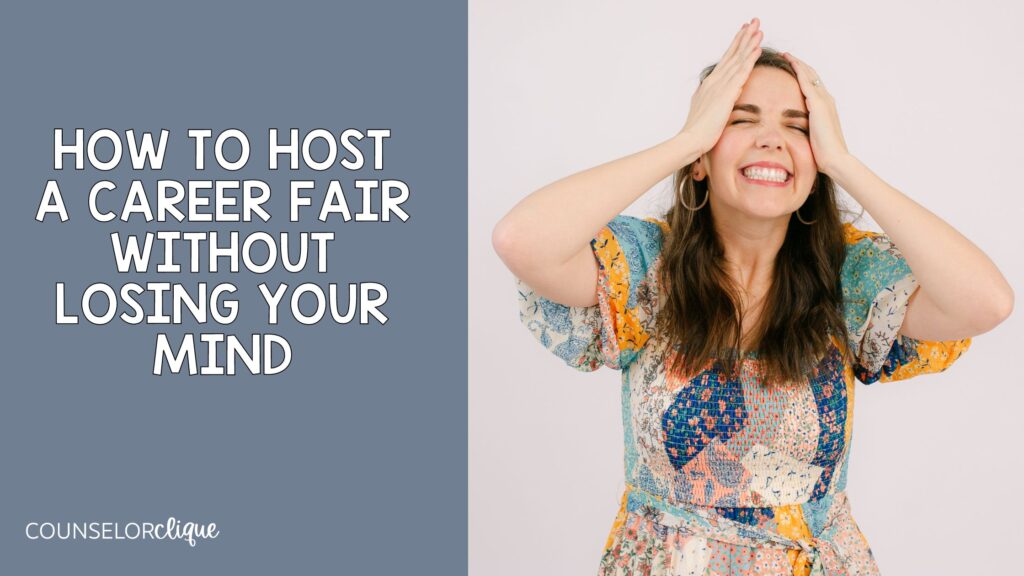
1- Get your career fair on the calendar early
I’ve found that I can always make excuses until the career fair is on my calendar, and I’ve told people about it to hold myself accountable. We did ours in April, so we started the advertising a few weeks before the event.
Do you use social media? Get it on Instagram and Facebook. Do you have a digital media class at your school or a student you know who is good at making videos? We had a student make us a video advertisement that played in the cafeteria, on the school website, and the school’s Facebook page. Make a bulletin board for it (“Get the Scoop on Careers!”). I swear half of our job is information management. If you forget to get it on the calendar and get the word out, your event will NOT be successful.
2- Start a career fair spreadsheet with contacts
We started with our state’s 16 career clusters to give us a framework for categories to pursue careers. We started with people we knew. Our spouses, our neighbors, our students’ parents, people we interact with, and have some relational capital to make the ask. We extended our network feelers outward.
As a team, we checked our LinkedIn pages, scrolled through our phones, and thought about our school system and PTSA connections. Another great resource would be putting out feelers to your school counseling advisory council. (You never know who they’ll be connected to!) Our list grew, and, eventually, we got at least one contact in each category. We finished with 35 business partners on our lineup.
We sent emails inviting these business partners to our event, asked for initial confirmation, and then we followed up with a reminder email and details closer to the event.
3- Consider school logistics and time-of-day to maximize career fair impact
We did our career fair during lunch to minimize classroom interruptions. (If we did it again, we’d invite teachers to bring their whole classes through if they wanted to have that option.) Our gym is right next to our cafeteria. On top of advertising, we had a speaker and a microphone set up in the cafeteria. Our emcee on the mic enticed students to get up during their lunch and take a walk through the career fair.
4- Establish a system for your career fair
As students went through and talked to business partners at their tables, one counselor stood at the entrance door handing out half-sheets of card stock. On one side of this cardstock, we made a map of which tables were where in the gym. (The path circled from one doorway around the gym making a path to the exit.)
On the other side of the cardstock, we had many sample questions that students could ask the employers about what they do. (You can see that Career Day Conversation Card here.) Of course, students can ask their own questions, but this was a great starting point for students to engage in conversation if they didn’t know what to ask or say. Each table had a sign labeling who they were. I made these on PowerPoint making a template and dropping in names. You could easily do this on Canva, too, with your free educator account.
5- Offer free food at your career fair
This goes for your business partners and your students. Since we asked our business partners to be set up from about 11:30 to 2:30, we ordered boxed lunches delivered to our school to let them eat during one of the breaks. We had cold water in a cooler for them, too. Many commented that they loved this. Someone donated some extra funds to our school that hadn’t been allocated yet… so our principal let us buy little ice cream cups!
If you feel clueless about getting funding for an event like this, consider asking early and often. Check out this blog post for other ideas to garner financial support for your counseling ideas from your administration team.
Kids follow the food (let’s be real— I do, too). To GET the free food, however, you know there was a catch. Students had to get their cards stamped by at least 3 business partners (we gave our table hosts cheap stamps before the event started). Students had to show their card to a counselor and drop it in the bucket in order to claim their coveted ice cream.
We counted these cards by hand at the end, and this is how we determined 631 students came through our doors. (Most of our seniors have an early dismissal and don’t stay through lunch— that’s why our goal targeted 9-11th graders.) 631 cards out of 1307 possible ninth through eleventh-grade students meant 48 percent of 9th through 11th graders came through our first annual career fair!
Though our goal was 50%, we really felt like the entire event was a HUGE win. We heard students and teachers buzzing about it for a week after! It was a LOT of work, but we felt so accomplished afterward. A real test of a student-centered school counseling program!
Grab the Career Fair Conversation Card and the Career Self Efficacy Pre/Post Test to give yourself some practical tools to hit the ground running.
Looking for more career resources for your high school counseling program? Download this free PDF: “10 Low Impact Ideas for Adding High Impact Career Services to Your High School Counseling Program.”
You’ll also enjoy Episode 116 of the High School Counseling Conversations podcast all about running a career fair at your school.

